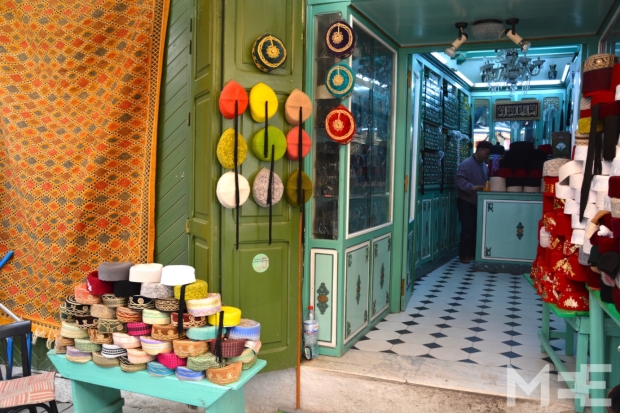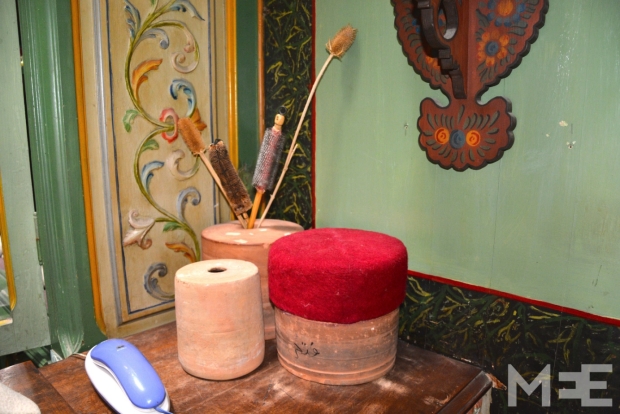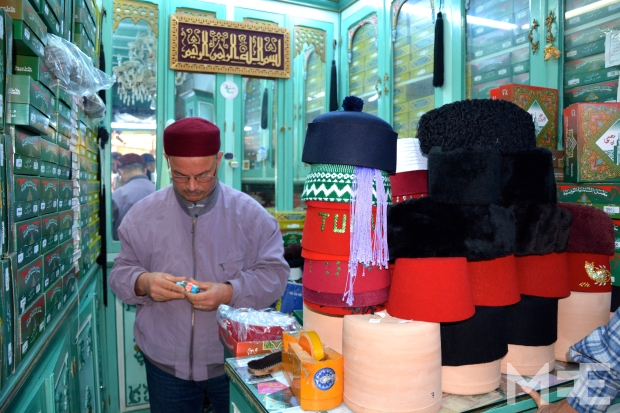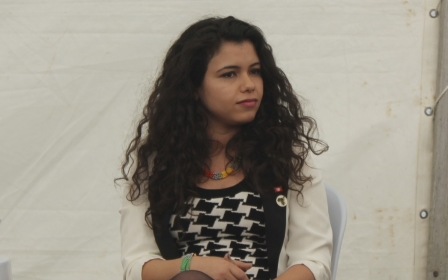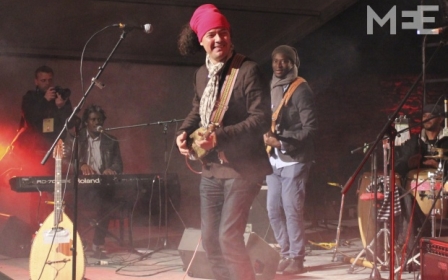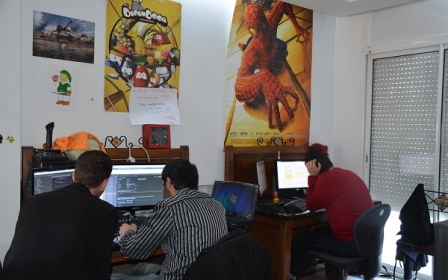Will Tunisia's chechia hat survive into future years?
The flat-surfaced, traditional red woollen hat, known as the chechia, is a fairly common sight on the streets of the old city of Tunis. The national hat has become a Tunisian trademark, among the symbols of the country's rich heritage. However, today the cap is often considered old-fashioned and the demand for it is decreasing across the country. Some fear that in a few years, the chechia will be nothing but a fading memory.
“I am concerned about the future of the chechia,” admits Sihem al-Amine, an architect who is passionate about restoring the heritage of the headwear. Reviving the chechia was a central theme during a three-day workshop, on 13-15 March, in the old city of Tunis, known as Medina. “The craftsmen really enjoyed it,” explains al-Amine, who was involved in the arrangement of the event, which was hosted by the Medina Preservation Association (ASM). “In the beginning they were reluctant but then they became very positive and enthusiastic.”
The workshop touched upon the production process of the chechia, its history and, the most important aspect, according to al-Amine - its people. Three weeks before the event, ”Keep Calm and Wear a Chechia” was launched, a campaign encouraging people to send their chechia photos and become a part of the workshop’s exhibition. “We asked people to take selfies of themselves with the chechia,” she explains. The aim was to show that the traditional hat could be trendy and chic and appeal to a younger audience. Al-Amine thinks it worked, but remains concerned about the cap’s future.
History of the chechia
It is believed that the chechia originated in Uzbekistan. In the 8th century, the small hat travelled to the Iraqi capital Baghdad and is believed to have arrived on Tunisian soil in the 13th century. Its first stop was the city of Kairouan, home to the Grand Mosque, one of Islam’s oldest houses of worship. But it was not until the 17th century that the chaouachis, the so-called chechia makers, came to the capital Tunis.
“The procedure remains the same,” explains Nasser whose last name, by coincidence, is Chaouachi, and who has had his chechia shop for 40 years. The small boutique, no bigger than 4 by 2 metres, is beautifully decorated in traditional Tunisian style. “But the number of craftsmen has decreased,” he says and describes how the market place, the Souk of Chaouachine, located between the Kasbah and the Zitouna mosque in the medina, during its glorious days, hosted about 30,000 chaouachis. Today there are only about 20 left, struggling to keep the business alive.
But there is much more to the production of the chechia than the tiny shops that fill the chechia alley and the production process, which hasn’t changed much over the years, explains Chaouachi. He carefully describes each step of the little red hat’s journey before arriving to the vendors’ hands. First, the wool is imported from Australia or China as the wool from the sheep in Tunisia can not assure the right quality. The imported wool is provided to women, most of them who work from home, knitting the initial white hats, the so-called kabbouss. Most of these women are situated in the regions of Bizerte and Ariana.
There are many steps of the production process that are unique and must be protected, explains al-Amine. The women’s knitting, for example, is one part of the production procedure that she is concerned could die out. “If the know-how is not transferred, the risk is that it will be lost,” she says but highlights that at the same time the job is very tough, many women don’t want their kids to follow in their footsteps. “If I was a mother, I wouldn’t teach my daughter to do this,” al-Amine says. The women are able to do about three caps a day and need 12 caps to earn 10 dinars (about 6 euros). “Most chechia makers continue because it is part of their tradition, it would probably be more lucrative for them to do something else.”
When the knitting process is over, the white knitted hats are taken to al-Battan, a warehouse 40 kilometres west of Tunis, which dates back to 1901. Here, the chechia is treated to improve its density and then boiled and dyed, most often in vermillion, the bright red colour.
Each craftsman also sews its own unique logo to each cap. Chaouachi shows his logo, a triangle of sorts in the inside of the hat. Once all these steps are done, the chechia is ready for shipping. About 5 percent of the production is distributed to the small shops in the medina and are sold on the national market. Today, the chechia business is estimated to create jobs for over 2,000 artisans. The remaining chechias are sold overseas. “It is primarily exported to Libya, Nigeria and Niger,” explains Chaouachi.
Colours of the chechia vary depending on the country in which they are sold. In Libya, the chechia is normally black, except the Benghazi model is also red as in Tunisia. In Morocco, and in some parts of Tunisia, it can also be seen in white or grey. Unlike the Tunisian model, the Benghazi version, "chenna," has a tassel hanging from the top. The chechia is not to be confused with its Moroccan counterpart, the Fez, which is also a red hat, but taller and crafted from a much stiffer material. The chechia, on the other hand, is soft and pliable.
On a good day during the winter, the high season, the 50-year-old vendor can sell about 15-20 chechias. “The demand is lower during the summer,” he notes. Normally, but depending on the quality, a chechia is sold for 12-20 dinars (6-10 euros). But there are high-quality ones that are sold for up to 60 dinars (almost 30 euros). Each chechia usually has a life span of several years, but the older generations wear it like they wear shoes, he explains.
A dying art?
Chaouachi has tried to transfer his know-how to the younger generations, but in general they are not interested, he says. Even though he is concerned, he doesn’t think that the art will die, “People will continue to wear it for special occasions,” he notes. But the risk is that the business will reduce significantly.
“I inherited the shop from my father,” explains Fathi Blaich, another chechia maker, who learned the art from a young age. Already at 10 he was spending time with his father in the shop. On one of his shop’s walls hangs an old photograph of himself with Habib Bourguiba, the country’s first President after independence, who used to wear the chechia. Despite the chechia’s historical value and his concern for its survival, Blaich doesn’t encourage his younger relatives to take over the shop. It is not for the impatient generations, he says and smiles. “It is considered old-fashioned,” he adds.
Twenty-five-year-old Eyman Gamha, who is wearing a chechia, agrees that it is considered old-fashioned but disagrees that it is on its verge of dying. “Perhaps it is starting to come back,” he says instead and argues that since the revolution when young Tunisians have had more freedom to re-discover themselves it might make a come-back. Gamha, who is involved in trying to promote and preserve the cap is wearing it almost every day. “My family thought I was crazy in the beginning.” But he is hoping other young people will follow his footsteps. One of his friends is also wearing the chechia. “It’s nice looking,” says 30-year-old Jamel Eddine Ben Saidane. “It’s made by Tunisians and most of all it’s very comfortable.”
Even though both Gamma and Ben Saidane are young, most of Chaouachi’s customers are older men. It is also rarely seen on women. “It is more a male thing,” explains Gamha’s friend, 28-year-old, Imen Yazidi who despite not wearing the chechia herself is keen to contribute to its preservation.
The chechia, chic and trendy?
Changing the mind-set about the chechia will take time, argues al-Amine but with innovative initiatives it can be done. “There have been initiatives to try to modernise it,” she explains. For some time some chechia makers experimented with different colours and details, but it was never long lived, explains al-Amine. “It is not what people want.”
“We need to change this old-fashioned connotation,” argues al-Amine. That’s what we tried to do with the selfies initiative during the workshop. “My nine-year-old daughter told me ‘Don’t say it is making you more Tunisian, just say it is pretty, keeps your head warm and makes you look smart,’” explains al-Amine. “Perhaps she is right.” A friend of al-Amine also proposed that perhaps the security forces or the police could begin to wear it, as it is, after all, a symbol for Tunisia, she says. Perhaps it could be a way of both preserving the headwear, while at the same time changing people’s perception of the Tunisian national hat.
New MEE newsletter: Jerusalem Dispatch
Sign up to get the latest insights and analysis on Israel-Palestine, alongside Turkey Unpacked and other MEE newsletters
Middle East Eye delivers independent and unrivalled coverage and analysis of the Middle East, North Africa and beyond. To learn more about republishing this content and the associated fees, please fill out this form. More about MEE can be found here.


